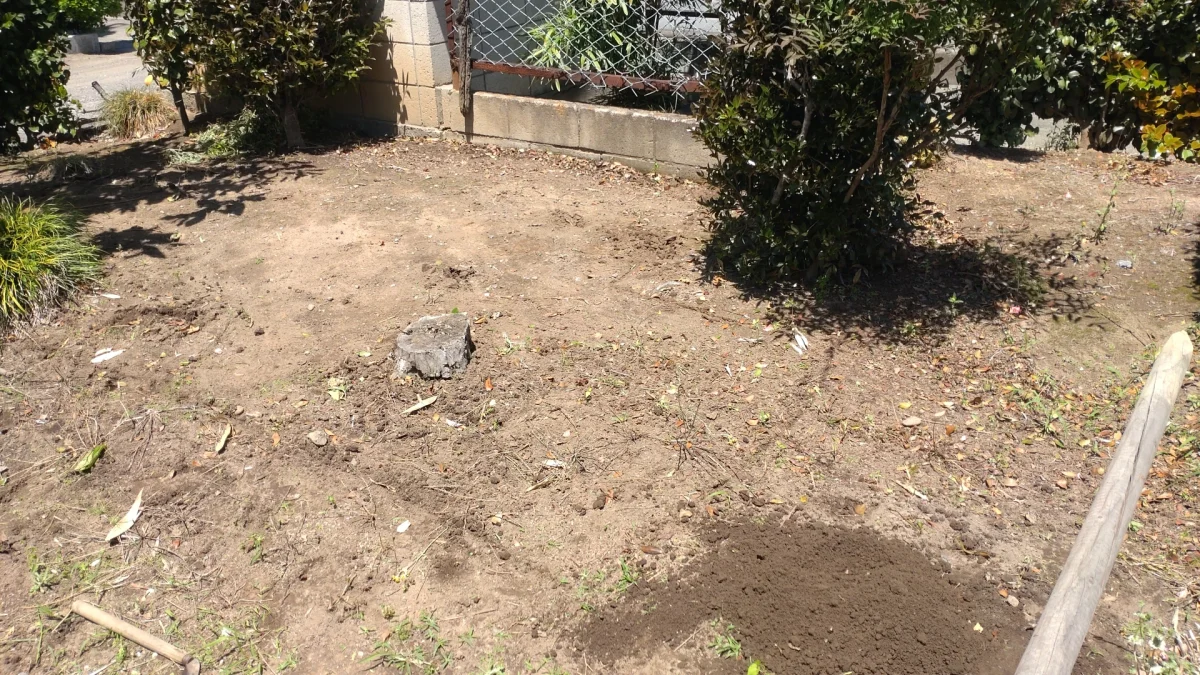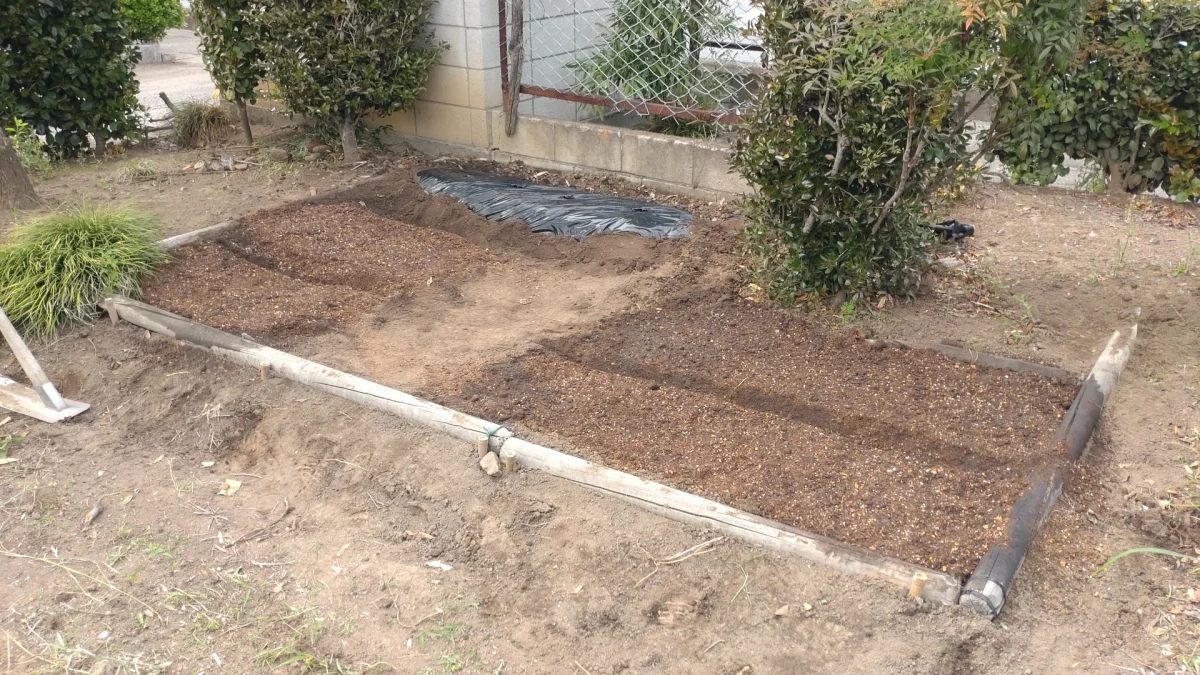
“Don’t my in-laws grow shiso?” my wife has asked me several times.
My parents’ house, where we can harvest Japanese butterbur and myoga ginger from the garden, doesn’t grow shiso. It’s no surprise, as my parents generally don’t eat those kinds of plants and have little interest in shiso. My wife, on the other hand, loves wild vegetables and herbs, so she was really disappointed that there wasn’t any shiso at my parents’ place.
Since my mom and dad don’t eat it, my wife had been asking me for a while to plant shiso somewhere it wouldn’t get in the way. So, during a visit, I decided to give it a try. I initially thought about planting it in the front garden, just like the myoga ginger and Japanese butterbur. But when I checked the lemon blossoms, I looked around and realized the conditions weren’t great due to other trees. More than anything, it looked like it would take half a day just to clear the waist-high weeds.
So, I reluctantly checked the backyard and found an area where I could somehow secure some space. Beforehand, I had asked my dad, the homeowner, “Is it okay if I plant some herbs you guys probably won’t eat, like shiso or basil, wherever?” He gave me a very generous “Plant them wherever you like.”
There are weeds in the corner of the backyard too, but it’s still better than the other spots (haha). In that particular spot, there’s a Japanese silver grass plant in a pot about 50 cm in diameter, buried in the ground, and the stump of a chestnut tree that died almost 10 years ago. However, it looked like I could manage just by tilling the necessary amount of soil, leaving the silver grass and stump as they were. There were no other plants being cultivated nearby, and though the camellia and persimmon trees were adjacent, I figured they wouldn’t harm each other. So, I decided on this spot. Time to get cultivating!
Weeding

Just to be sure, I double-checked with my dad, and he approved it without any issues, so I started the cultivation. However, here’s the bad news. When I asked to borrow the weed whacker, my dad replied, “It’s broken and unusable.” So, I had no choice but to pull the weeds by hand.
As I roughly cleared the weeds, I thought about how much space I wanted. I lined up some stakes that were once used for hazakake (sun-drying rice) and actually fenced off an area. “Oh, that’s not bad,” I thought. But then, “Maybe a little more space would be better?”
It seemed like it would be better to have more freedom with the layout if the silver grass pot and the chestnut stump weren’t there. More than anything, I got greedy and thought, “Since I’m doing this anyway, I might as well have a bit more space.”
Moving the Japanese Silver Grass
I dug up the pot, shifted it horizontally, and re-buried it. Then, I used a thick hoe to dig up the chestnut stump. That alone was a major task. I had decided on this spot to make things easier, but with the broken weed whacker and now unexpected tasks, the backyard cultivation was proving to be a lot more work than I anticipated.
After that, I continued swinging the hoe for about an hour, removing stones, tree roots, and broken roof tiles that came out of the ground. I then arranged the logs to section off the area and made fine adjustments. The final adjustment was to level the entire area. There was a remnant of an old ditch, so the back was higher and the front was lower, making it unusable just by tilling.
Removing the Stump and Installing the Enclosure
I created a base to line up the logs for the enclosure, piled soil on the front side, and dug out the back. Once the overall height of the surroundings was balanced, I repeatedly dug and moved the soil within the area. Even though it was a small space, it drained my energy more than I expected (haha).
Honestly, when I help out with farm work, I almost never continuously swing a hoe. I usually only use it for small tasks like mounding soil when laying mulch or setting up tunnels, so this was completely different. My arms were screaming from cultivating an area that was probably less than two tsubo.
Sowing Complete

Cultivation finished.
In the end, I finished (or stopped) cultivating the backyard space at my physical limit. The soil actually looked surprisingly good, and I barely managed to stop myself from just scattering the seeds directly. I had initially thought about asking my mom and dad for some soil, but they were resting, so I didn’t bother them. Instead, I went to the home center, bought some potting soil, and added it in.
“If it doesn’t work out, it’s not a big deal…” or rather, my honest feeling at that point was, “I’m so exhausted, I just don’t care anymore.”
The main herb my wife wanted was shiso. I also sowed basil, and then garden lettuce and one other thing (haha) in the remaining space. I don’t care that shiso is generally not recommended for direct planting in the ground. I’m not planting it in a field, and I have the homeowner’s permission, so my attitude is incredibly casual: “If it gets too overgrown, I’ll deal with it then.” After all, weeds proliferate wildly anyway, so it’s not really any different from usual.
When I opened the bag of garden lettuce seeds, I just sprinkled them on the soil as if I were sprinkling furikake over rice. The way I sowed the seeds and laid the mulch clearly showed my state at the time – not exactly what you’d expect from a farmer’s son (haha). We’ll see what happens! My mom and dad also grow lettuce, but I’m completely curious to see how it grows differently from the field. If I can harvest shiso and basil, my initial goal will be achieved, so all I’m looking for is some fun (haha).

Additional information:
- Japanese butterbur (蕗, Fuki): A wild plant whose stalks are consumed in Japanese cuisine, often simmered or pickled.
- Myoga ginger (ミョウガ, Myoga): The aromatic flower buds of a ginger plant, used as a garnish or flavoring in Japanese dishes, known for its unique crisp texture and refreshing taste.
- Shiso (シソ): A general term for perilla leaves, which includes ooba (green perilla). It’s a popular herb in Japanese cuisine, often used as a garnish, wrap for sushi, or flavoring in dishes.
- Japanese silver grass (ススキ, Susuki): A common ornamental grass in Japan, often seen in fields and mountains, and associated with autumn.
- Hazakake (はざかけ): A traditional method of sun-drying harvested rice stalks by hanging them on wooden frames, believed to improve the flavor and quality of the rice.
- Tsubo (坪): A traditional Japanese unit of area, approximately 3.31 square meters or 35.58 square feet.
- Furikake (ふりかけ): A dry Japanese seasoning sprinkled on cooked rice, vegetables, or fish, typically consisting of dried fish, sesame seeds, chopped seaweed, sugar, and salt.



